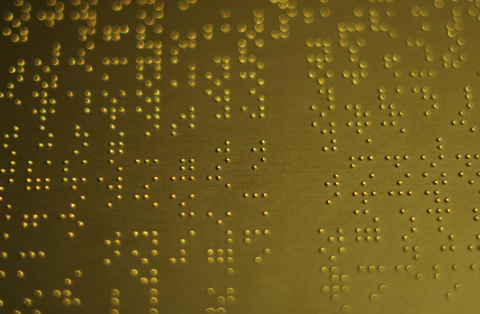New Technology Brings Blind Computing into 21st Century

A new technology that creates full-page, refreshable Braille displays promises to bring 21st century computing to the blind.
Today’s Braille displays can show just one line of text at a time, making it difficult for those without eyesight to perform common online tasks such as browsing the Internet. And they also are often expensive, carrying an average price tag of $8,000.
Even so, “this one-line display is very helpful,” said Peichun Yang, who is leading the effort to develop the new Braille technology at North Carolina State University.
“If you add another line, it’s a tremendous help. A full page … that’s another world,” said Yang, who lost his eyesight more than 10 years ago and is himself blind.
The new technology would allow a full page of text at a time, refresh in milliseconds and display images in the same way that images and text are displayed — as raised bumps on a tactile display.
The key to the new Braille display is what the researchers refer to as the “hydraulic and latching mechanism.”
Here’s how it works: Similar to pixels in visual displays, these Braille displays would be made up of thousands of dots that are raised like bumps to form Braille letters and numbers.
Get the world’s most fascinating discoveries delivered straight to your inbox.
Each dot can be thought of as a tiny container made out of a special shape-shifting material that is filled with liquid. When electricity is applied, the sides of this container bend and push the liquid filler upward, creating a tiny bulge at the top of the container.
This kind of shape-changing material has been tried before but with little success until now. The main challenge has been with "latching" or locking the dot in place once it’s raised, Yang told TechNewsDaily.
The latch allows the raised dots to stay put when a blind person is touching them.
Yang’s solution involved a pin attached to a support block, which inflates with the liquid, pinning it in place. When it’s time to refresh the page, the pin gets pulled down and the dot deflates.
Working prototypes of the new Braille display should be available in one to two years, with the first commercial version ready for customers in five years, Yang said.
Yang and his colleagues presented their research earlier this month at the International Conference on Electroactive Polymer Actuators and Devices in San Diego.

